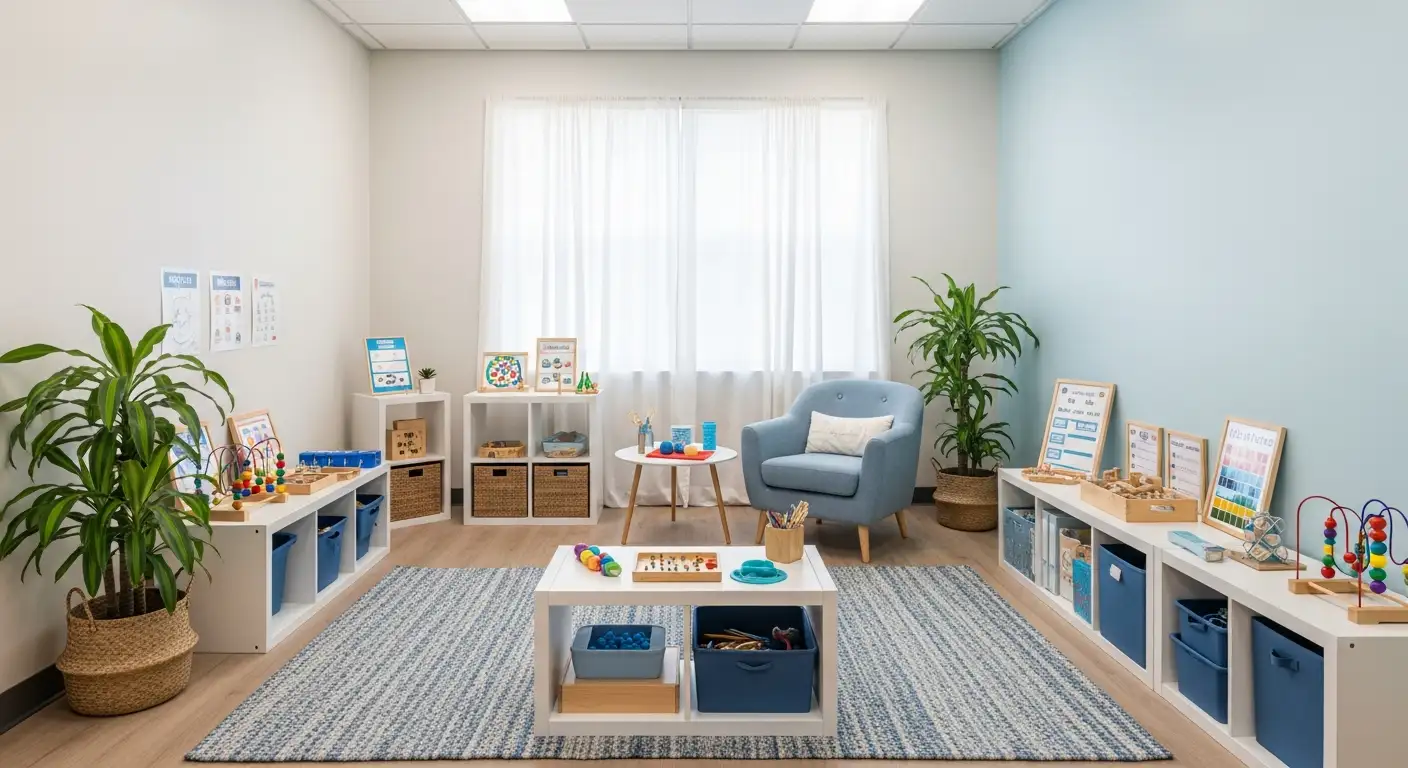Setting the Stage for Lifelong Learning and Development
Applied Behavior Analysis (ABA) is a scientifically supported, flexible therapeutic approach designed to promote positive behaviors and diminish problematic ones across all age groups. Its foundation lies in understanding behavior through environmental interactions, and its effectiveness hinges on personalized, goal-oriented intervention. This article delves into how ABA therapy varies with age, its proven outcomes, and guidelines for maximizing benefits at different developmental stages.
The Foundations and Principles of ABA Therapy
What is ABA therapy?
ABA therapy is a science-based approach that focuses on understanding and modifying behavior through environmental interactions. It relies on established research to guide interventions aimed at promoting skills and reducing harmful behaviors. The therapy uses techniques like positive reinforcement, analysis of antecedents and consequences, and structured interventions to facilitate meaningful and lasting behavioral change.
Core strategies used in ABA such as positive reinforcement and ABC analysis
A central element of ABA is positive reinforcement, which involves rewarding desirable behaviors to encourage their recurrence. For instance, praising a child for using words instead of gestures can help reinforce speech development.
Another core component is the ABCs of ABA—Antecedents, Behaviors, and Consequences. This method analyzes what happens before a behavior (antecedent), the behavior itself, and what follows (consequence) to understand and modify behavior effectively.
For example, if a child throws a tantrum after being denied a toy (the antecedent), understanding the consequence helps in designing suitable interventions, such as teaching patience or offering alternative rewards.
Settings in which ABA is delivered, including home, school, and community
ABA therapy is highly flexible and can be adapted to meet individual needs across various environments.
In-home ABA provides interventions directly in the natural environment, often involving parents to promote consistency and learning in daily routines.
School-based ABA programs are scheduled within routine educational settings, helping children develop communication, social, and academic skills.
Community-based ABA services extend into public settings, supporting generalization of skills in everyday life.
Therapies can be delivered one-on-one or through group settings, depending on the child's needs and goals. These adaptable formats make ABA a versatile intervention suited to a wide range of individuals and settings.
The Impact of ABA Across Developmental Stages
What evidence supports the effectiveness of ABA therapy?
Research consistently backs ABA as a highly effective intervention for individuals with autism and other developmental challenges. Studies have shown that intensive ABA therapy, administered for 25-40 hours weekly over one to three years, can significantly enhance key developmental areas. These include improvements in intellectual functioning, language skills, social interactions, and daily living abilities.
Meta-analyses further reinforce these findings, revealing medium to large effects on both receptive and expressive language development, with pooled effect sizes of approximately 1.48 and 1.47, respectively. Additionally, many studies report positive impacts on social skills and problem behaviors, supporting ABA's role as an evidence-based approach.
Timing and Age-Specific Interventions
What is the recommended age to start ABA therapy?
Research indicates that the best time to initiate ABA therapy is generally between the ages of 2 and 6. Starting during this window allows children to benefit from critical periods of brain development, especially for improving language, social skills, and adaptive behaviors. Initiating therapy earlier, particularly before the age of four, is especially advantageous because it can lead to more substantial developmental progress.
Early intervention benefits, including language and social skills improvements
Beginning ABA therapy early in a child's life can significantly enhance their ability to communicate, interact socially, and manage daily routines. Studies have shown that early intervention, especially during preschool years, can lead to marked improvements in language acquisition, social engagement, and self-care skills. These developmental gains often facilitate better integration into mainstream environments, fostering independence and confidence.
Use of therapies like ESDM with infants as young as 6 months
In addition to traditional ABA methods, specialized approaches such as the Early Start Denver Model (ESDM) are designed for very young children, including infants as young as 6 months. ESDM combines ABA principles with naturalistic developmental strategies to promote social communication skills at an early stage. Early intervention using these models has shown promising results, with some children no longer requiring additional behavioral interventions by age 2.
Can ABA benefit very young children and infants?
Absolutely. Tailored ABA methods like ESDM demonstrate that intervention can start in infancy, targeting foundational social and communicative skills during a critical period of brain plasticity. This early approach can set the stage for improved developmental trajectories, making it a valuable option for families seeking to address developmental challenges as early as possible.
| Age Range | Intervention Type | Focus Areas | Expected Outcomes |
|---|---|---|---|
| 6 months to 2 years | ESDM (Early Start Denver Model) | Social communication, joint attention | Improved social interactions, reduced early signs of autism |
| 2 to 4 years | Traditional ABA | Language, social skills, adaptive behaviors | Enhanced communication, better social skills |
| 4 to 6 years | Center-based and naturalistic ABA | Academic skills, independence | School readiness, increased independence |
| Older children and adults | Adapted ABA techniques | Vocational skills, social, daily living | Enhanced quality of life and personal independence |
By understanding optimal timing and leveraging age-specific strategies, families and practitioners can maximize the benefits of ABA therapy, ensuring that interventions align with developmental needs at every stage.
Tailoring ABA Therapy to Age and Developmental Stage
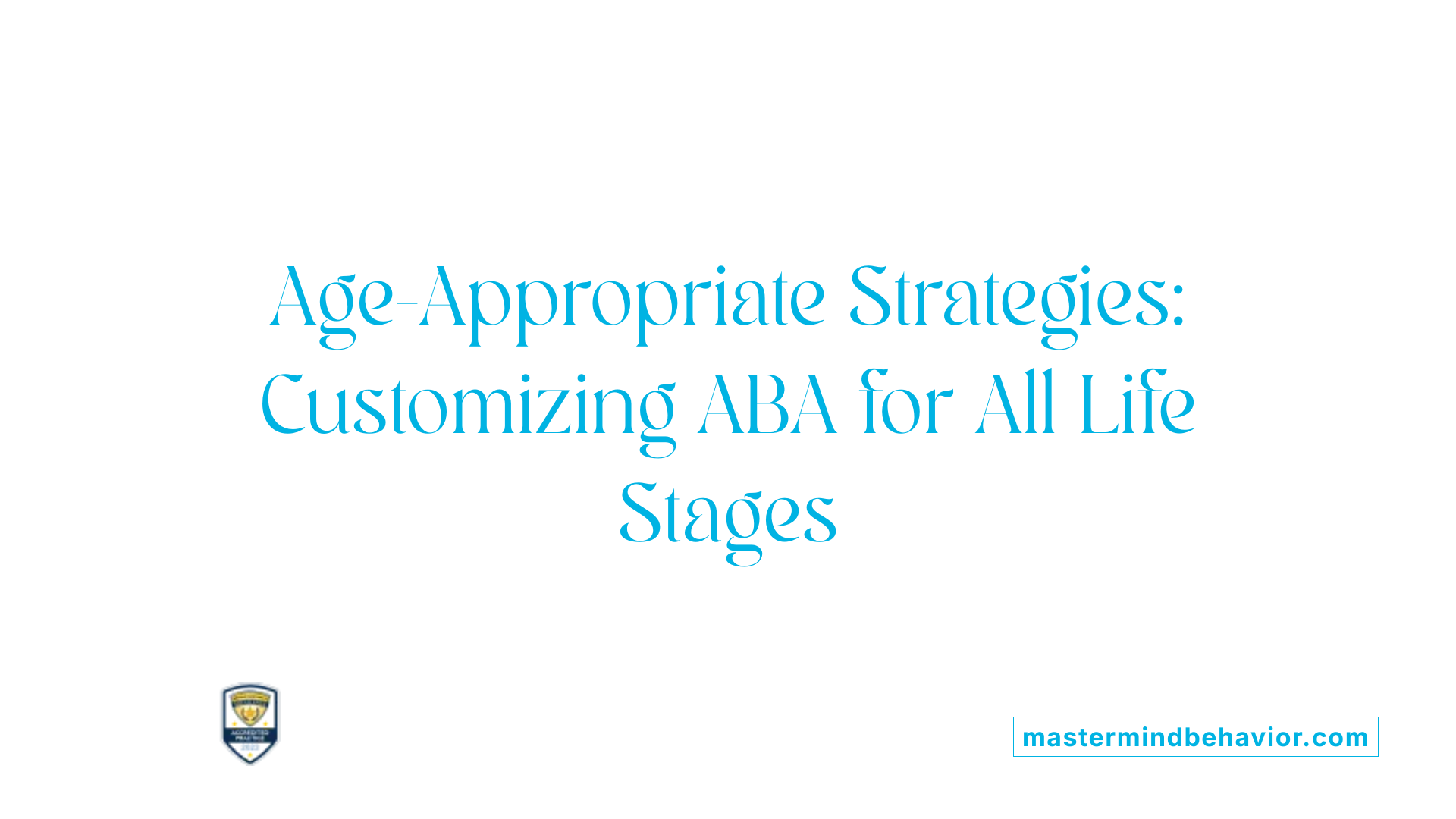
In-home versus center-based programs for different ages
ABA therapy settings vary depending on the age and needs of the individual. For infants, toddlers, and preschoolers, in-home programs are common. These involve natural environment teaching, where parents are actively engaged, providing a familiar and comfortable setting that promotes generalization of skills.
In contrast, children over age four often benefit from center-based ABA programs. These structured environments offer routine-based learning, social interaction opportunities with peers, and specialized resources. Such settings are designed to facilitate developmental progress through a consistent, immersive experience.
Age-specific strategies, from simple play-based methods for young children to complex skills for teens and adults
Early childhood ABA employs play-based and developmentally appropriate activities that encourage imitation, communication, and social interaction. Techniques like Discrete Trial Training (DTT) and Natural Environment Training (NET) are adapted for this age group to foster foundational skills.
As children grow older, ABA interventions become more targeted towards academic skills, social skills, and self-care routines. For adolescents and adults, therapy may focus more on functional life skills, employment-related behaviors, and social independence. These strategies incorporate more complex social and functional skills tailored to individual goals.
The importance of individualized assessment and program design
Every person undergoing ABA therapy receives an assessment to determine their unique strengths, challenges, and developmental stage. This assessment guides the creation of personalized programs with measurable objectives.
Program design involves choosing appropriate techniques, setting realistic milestones, and selecting optimal learning environments. Whether delivered in the home, school, or community, each plan is adjusted over time to match progress and changing needs.
How does ABA therapy differ between age groups?
For young children, ABA often involves play-based methods and parent training in natural settings, while older children and adults may receive more structured, goal-oriented interventions tailored to their developmental and behavioral needs.
Is ABA adaptable for older individuals?
Absolutely, ABA principles are versatile and can be adapted for adolescents and adults to improve academic, social, independence, and life skills.
| Setting | Typical Focus | Strategy Examples | Age Group |
|---|---|---|---|
| In-home | Natural environment, parent involvement | Play-based routines, parent training | Infants to preschoolers |
| Center-based | Structured routines, socialization | Skill groups, peer interaction classes | Older children, teens, adults |
Understanding these differences helps practitioners and families choose appropriate environments and techniques, ensuring effective and personalized ABA interventions across the lifespan.
The Role of Assessment and Personalization
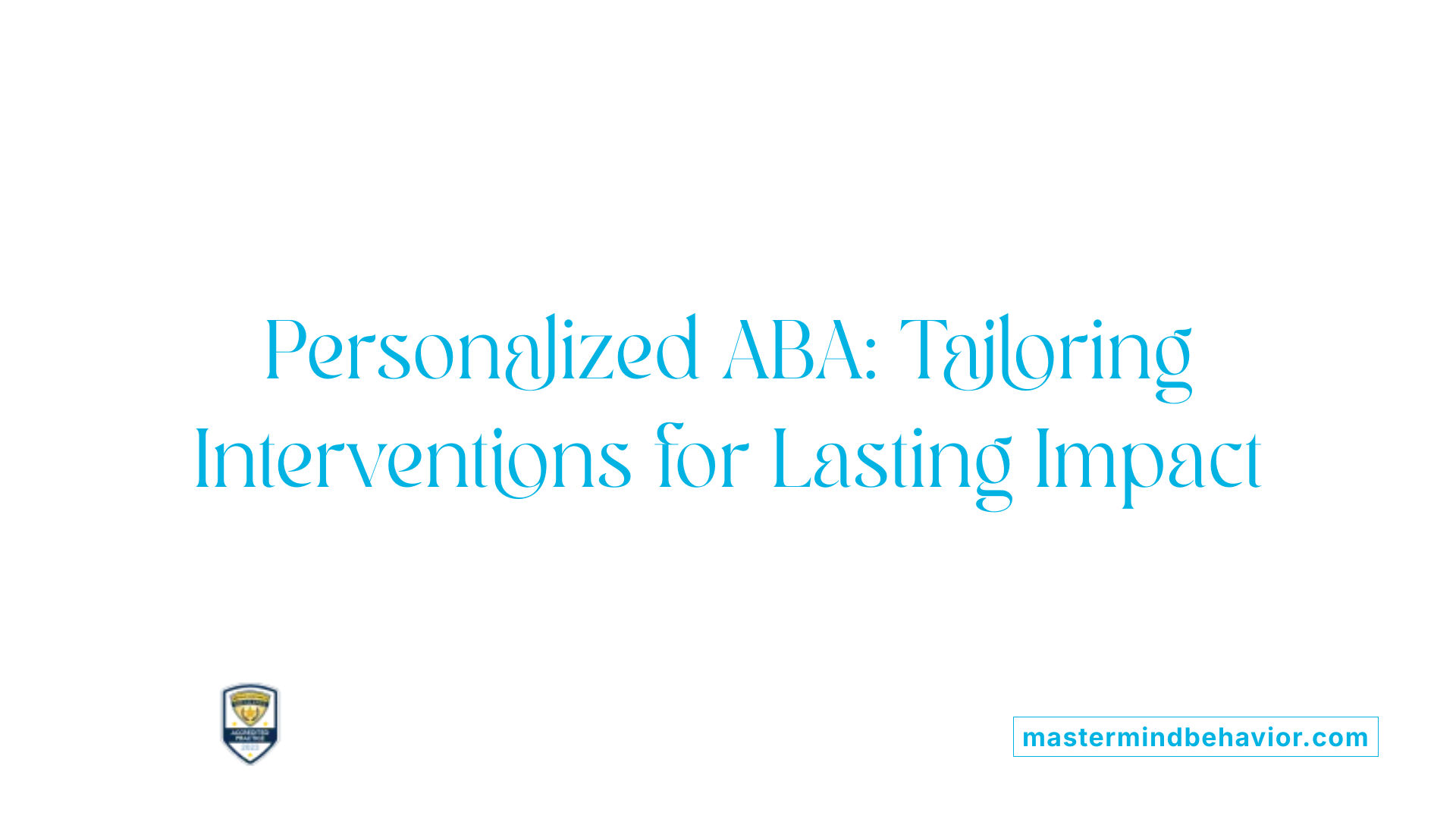
How is ABA therapy assessed for effectiveness?
The success of ABA therapy is primarily measured through systematic progress monitoring and data collection. Practitioners maintain detailed records of each individual's behaviors, skills, and responses to specific interventions. These data points help determine whether behavioral targets are being mastered, with mastery often defined as performing skills with 80% accuracy or higher.
Functional Behavior Assessments (FBAs) play a crucial role in evaluating the underlying reasons for certain behaviors and shaping personalized treatment plans. An FBA looks at antecedents, behaviors, and consequences—the ABCs—to identify triggers and effective interventions. Ongoing assessments ensure that therapy remains relevant and effective over time.
What factors influence the success of ABA?
Various individual factors significantly influence outcomes in ABA therapy. These include the severity of behavioral symptoms, the child’s developmental stage, and their ability to learn new skills. Family involvement adds another layer of influence; active participation and training of caregivers enhance therapeutic results.
Personalized goals—derived from thorough assessments—align therapy with the individual’s unique needs and strengths. Adaptability in intervention strategies, constant data collection, and regular reassessment ensure that therapy remains effective and responsive to progress or challenges.
Why are ongoing assessments important?
Regular monitoring allows practitioners to make data-driven decisions, optimizing intervention plans for each individual. Adjustments can be made to increase or decrease intensity, modify techniques, or shift focus areas, ultimately maximizing the benefits of ABA therapy.
| Aspect | Description | Impact |
|---|---|---|
| Functional Behavior Assessment | Evaluates triggers, functions, and consequences of behaviors | Guides personalized intervention strategies |
| Data Collection | Tracks progress and mastery levels | Measures effectiveness and informs adjustments |
| Goal Setting | Defines achievable, measurable objectives | Keeps therapy focused and goal-oriented |
| Tailoring Plans | Based on individual needs, developmental stage, and family input | Ensures relevance and effectiveness |
Overall, thoughtful assessment and continuous adaptation are central to optimizing ABA therapy outcomes, ensuring that each individual receives tailored support that promotes lasting development.
Understanding and Enhancing Treatment Outcomes
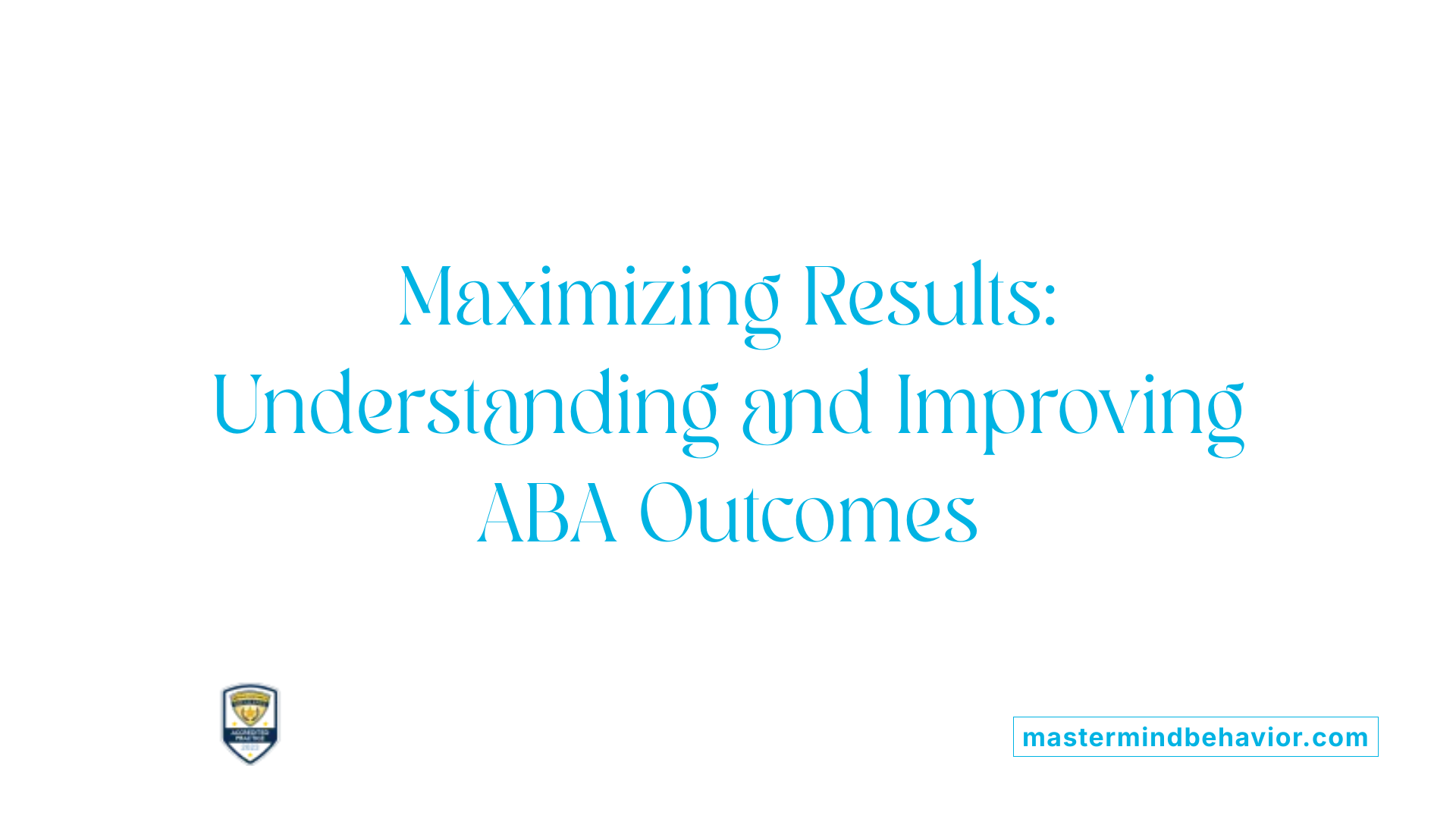
What are the key dimensions of ABA effectiveness?
ABA therapy's success relies on several core aspects that ensure its effectiveness. These include its applied focus on real-world issues, its emphasis on observable and measurable behaviors, and its foundation in data analysis to guide decisions. The therapy employs clear, structured procedures and strictly adheres to behavioral principles like positive reinforcement. Moreover, these interventions aim for genuine improvements that can be observed across different settings and over time, ensuring skills are not only learned but also maintained and generalized.
How do these dimensions ensure high-quality outcomes?
When practitioners integrate these aspects—being applied, behavioral, analytic, technological, conceptual, effective, and generalizable—they create a robust framework for intervention. This comprehensive approach encourages ethical practices, minimizes variability, and maximizes the impact of therapy. The consistent use of data and adherence to proven behavioral strategies lead to meaningful, lasting behavioral change, ultimately helping individuals develop the skills needed for greater independence and social integration.
Maintaining skill generalization across environments and over time
A fundamental goal in ABA is ensuring that skills learned in therapy translate to everyday environments. This involves designing interventions that promote generalization, so behaviors are consistently demonstrated at home, school, and in the community. Continuous data collection and analysis support adjustments to strategies, helping maintain progress and prevent regression.
| Dimension | Focus Area | Impact |
|---|---|---|
| Applied | Real-life behavioral issues | Increases relevance and practicality of intervention |
| Behavioral | Observable behaviors | Facilitates accurate measurement and progress tracking |
| Analytic | Data-driven decision-making | Ensures interventions are based on evidence |
| Technological | Use of procedures and tools | Enhances precision and replicability |
| Conceptual | Theories and principles | Grounds interventions in proven science |
| Effective | Measurable improvements | Validates intervention success |
| Generality | Skill transfer across environments | Promotes realistic and sustainable development |
Research in ABA emphasizes that these dimensions work together to produce positive outcomes. The current literature advocates for continued studies to compare ABA with other interventions and to measure long-term quality of life, confirming the importance of an integrated, data-focused approach for optimal results.
Challenges and Future Directions in ABA Research
What are the limitations in current ABA research?
Although ABA is widely supported and used effectively, current research faces several limitations. Many studies are small and rely heavily on single-case experimental designs, which limit the ability to generalize findings across broader populations. There is a shortage of large-scale, randomized controlled trials, making it challenging to draw definitive conclusions about the overall effectiveness of ABA.
Additionally, few studies measure quality of life (QoL), an important aspect of long-term well-being and daily functioning. This gap suggests that while many outcomes show improvement, we lack comprehensive data on how ABA impacts individuals' overall happiness and life satisfaction.
What future research is needed?
To enhance understanding and application of ABA, future research should focus on conducting large-scale, controlled studies that compare ABA with other interventions. These studies should include long-term follow-up to assess sustained benefits and examine broader outcomes such as QoL.
Moreover, research should aim to identify which specific strategies work best for different age groups and individual needs. This will help tailor interventions more effectively and optimize results across ages and developmental stages.
Establishing standardized, validated measures for assessing long-term and subjective outcomes will also be crucial. This comprehensive approach will provide stronger evidence to guide practitioners, policymakers, and families in making informed decisions about ABA therapy.
Importance of Family and Community Engagement
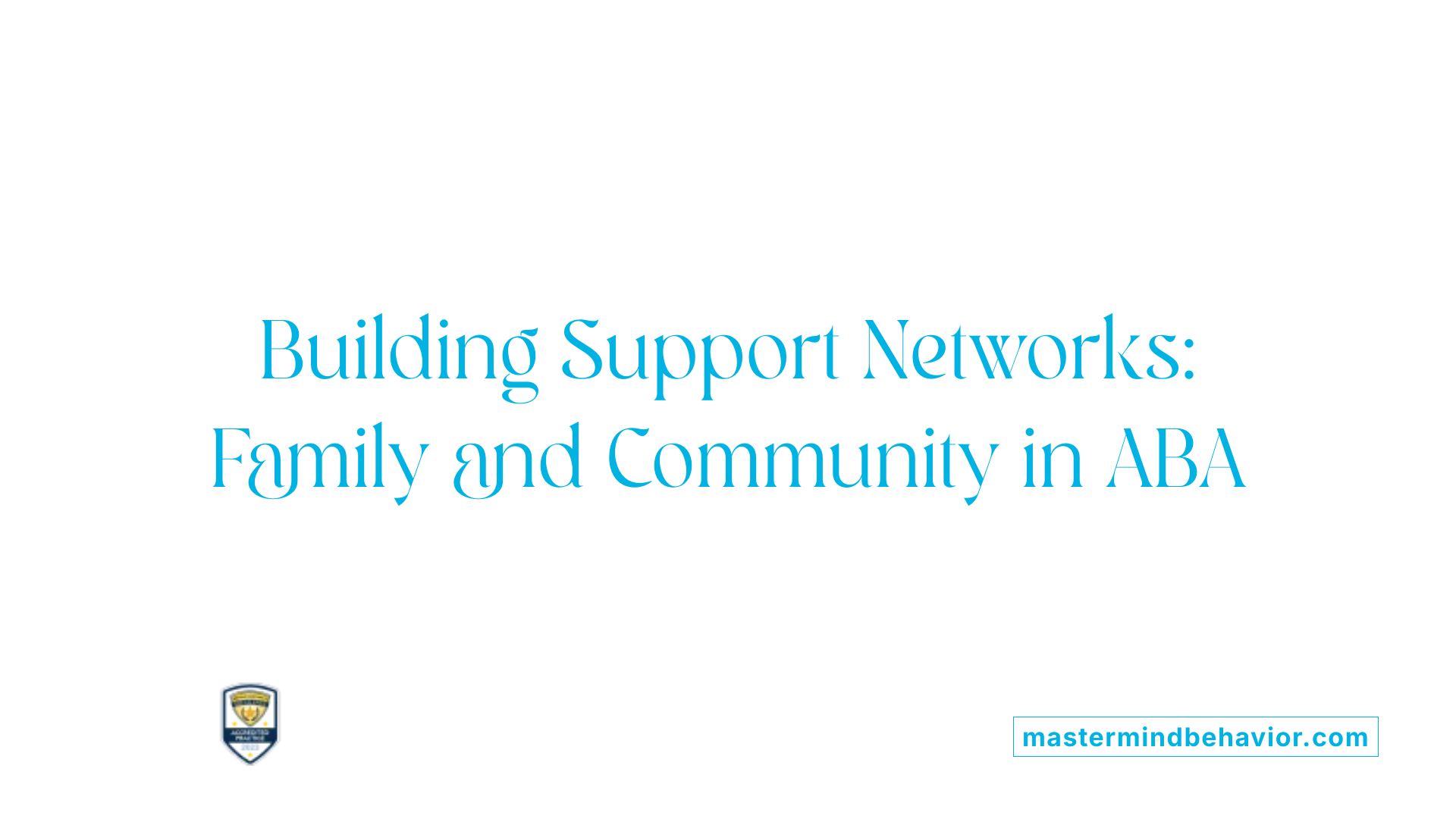
Why is caregiver involvement crucial in ABA?
Caregiver participation plays a vital role in the success of ABA therapy. When parents and family members are engaged, they help ensure that learned skills are applied consistently across different environments. This ongoing reinforcement not only accelerates progress but also helps children generalize their new behaviors beyond the therapy setting.
Additionally, active family involvement fosters better communication between therapists and caregivers, allowing for tailored strategies that fit the child's unique needs. This collaboration enhances the overall effectiveness of the intervention and supports more sustainable developmental gains.
How can families be supported?
Families are central to successful ABA programs, and providing them with proper training and resources is essential. This includes guiding parents on how to implement specific reinforcement techniques, manage challenging behaviors, and incorporate learning opportunities into daily routines.
Educational sessions, coaching, and ongoing support help parents feel confident in their ability to contribute effectively. When families are actively involved and well-equipped, they can reinforce skills learned during therapy sessions and maintain progress at home, school, and within their community.
Collaborative approaches in different settings
Effective ABA therapy often involves a team approach that includes caregivers, therapists, educators, and community members. In-home services enable parents to participate directly in interventions in natural environments, fostering better learning and generalization.
For school-aged children, collaboration with educational staff ensures consistency and allows ABA principles to be integrated into classroom settings. Community involvement, such as integrating therapy with social and recreational activities, further supports holistic development.
Bringing together families, schools, and community resources maximizes the impact of ABA therapy. This collaborative framework creates a support network that encourages ongoing learning, behavioral improvements, and greater independence for individuals of all ages.
Conclusion: Lifelong Benefits and Continued Growth
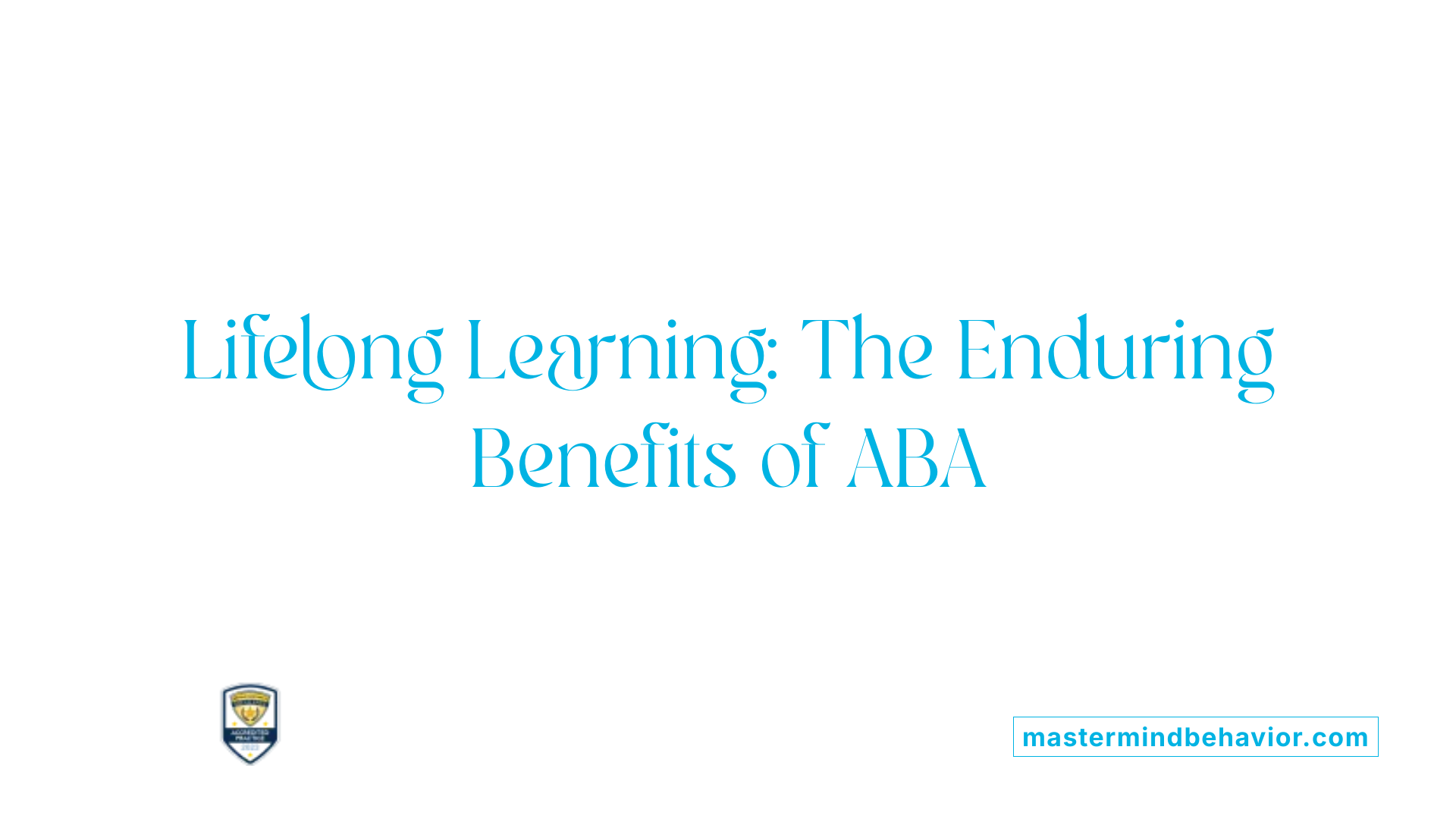 ABA is not just a childhood intervention; it serves as a useful lifelong resource for behavioral support. Its principles—like positive reinforcement and behavior analysis—are adaptable and can be applied across all ages, from toddlers to seniors.
ABA is not just a childhood intervention; it serves as a useful lifelong resource for behavioral support. Its principles—like positive reinforcement and behavior analysis—are adaptable and can be applied across all ages, from toddlers to seniors.
As individuals grow, ABA can be integrated into various therapeutic approaches to meet changing needs. For example, adults may utilize ABA strategies to improve independence, manage daily routines, or enhance social skills. This flexibility allows ABA to remain relevant and effective throughout an individual's life.
Encouraging ongoing engagement with ABA fosters continuous development. When therapy is tailored and consistent, individuals often see sustained progress, leading to improved quality of life and greater self-sufficiency.
Is ABA effective beyond childhood?
Yes, ABA's principles are applicable across the lifespan, supporting behavioral, social, and independence skills in teenagers and adults.
What is the outlook for lifelong development through ABA?
With ongoing, personalized intervention, ABA can continue to facilitate meaningful growth, skill mastery, and quality of life improvements throughout an individual's life.
Through consistent, adaptable application, ABA remains a valuable tool for lifelong development, helping individuals lead more independent and fulfilling lives at any age.
Empowering Lifelong Development Through Evidence-Based Practice
While early intervention remains the most impactful period for ABA therapy, its adaptable, evidence-based framework allows meaningful benefits for individuals at any age. Recognizing the importance of personalized assessment, caregiver involvement, and ongoing evaluation ensures that ABA continues to serve as a vital resource for lifelong learning, behavior support, and enhanced quality of life for all individuals.
References
- Applied Behavior Analysis (ABA) | Autism Speaks
- Understanding ABA Therapy Age Range for Your Child's Success
- The Effects of Age and Treatment Intensity on Behavioral Target ...
- ABA Therapy Age Limits & Age Range Based on Evidence - Blue ABA
- Applied Behavior Analysis in Children and Youth with Autism ...
- Autism and ABA Therapy: Everything You Need to Know
- Understanding the Optimal Age Range for ABA Therapy
- ABA and Autism Blog Posts - Relias




